Discover 15 hidden attractions, cool sights, and unusual things to do in Calamba (Philippines). Don't miss out on these must-see attractions: UPLB Museum of Natural History, Tadlac Lake, and Villa adela Private Hot Spring Resort. Also, be sure to include Rizal Shrine in your itinerary.
Below, you can find the list of the most amazing places you should visit in Calamba (Laguna).
Table of Contents
UPLB Museum of Natural History
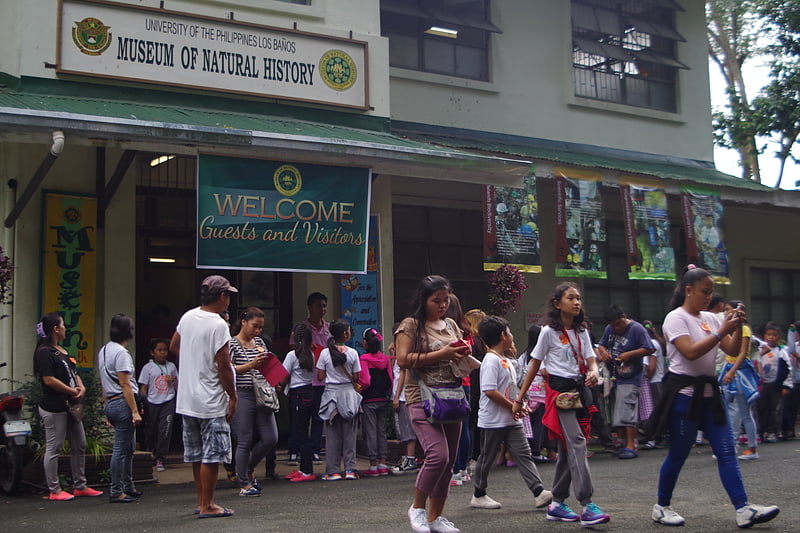
The UPLB Museum of Natural History is a natural science and natural history museum within the University of the Philippines Los Baños campus. It serves as a center for documentation, research, and information of flora and fauna of the Philippines. The museum is one of the research and extension units of the UPLB and its role parallels that of a library for written records.[1]
Address: Makiling Road, Calamba
Tadlac Lake

Lake in the Philippines. Tadlac Lake, also colloquially known as Alligator Lake, is a freshwater volcanic crater lake located in Barangay Tadlac, in the municipality of Los Baños of Laguna province in the Philippines. The lake-filled maar is located along the southern shore of Laguna de Bay, the largest lake in the country, with Alligator Lake protruding out of the shore of the larger lake. If not for its slightly-elevated crater rim, Alligator Lake would be wholly engulfed by Laguna de Bay.
The crater lake is one of the maars of the Laguna Volcanic Field. It is listed as one of the inactive volcanos in the Philippines by the Philippine Institute of Volcanology and Seismology (PHIVOLCS).
Tadlac lake is also notable for its history of annual Lake overturns, locally called langal. This phenomenon, rare elsewhere but usually occurring in Tadlac lake during the cold months of December to February, is the result of trapped carbon dioxide (CO2) erupting from the deep layers of the lake towards the surface, leading to fish kills due to low levels of dissolved oxygen. This phenomenon was greatly heightened by the introduction of aquaculture to the lake in the mid-1980s, eventually leading to a massive and costly fishkill in 1999, which in turn led to the cessation of aquaculture activities on the lake.
Prior to the introduction of aquaculture, Alligator Lake was considered as an oligotrophic lake, having low nutrient content and low algal production, resulting in very clear water with high drinking-water quality.[2]
Villa adela Private Hot Spring Resort
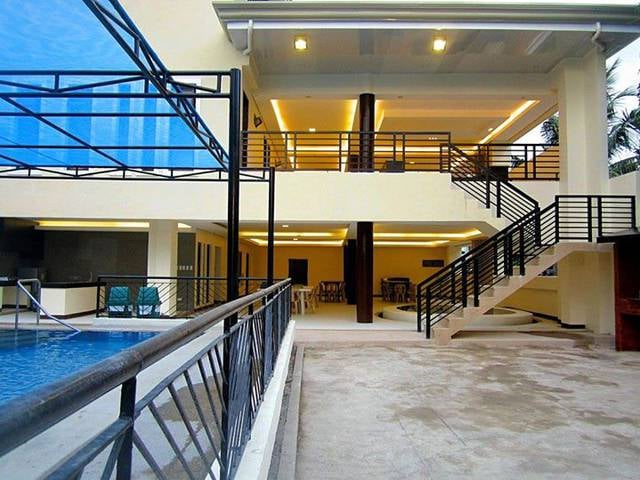
Watersports, Swimming, Hot springs, Swimming pool
Address: A. Manaig, Calamba
Rizal Shrine

The Rizal Shrine in Calamba is a reproduction of the original two-story, Spanish-Colonial style house in Calamba, Laguna where José Rizal was born on June 19, 1861. Rizal is regarded as one of the greatest national heroes of the Philippines. The house is designated as a National Shrine by the National Historical Commission of the Philippines. It is located along Mercado Street and Rizal Street in Calamba's Poblacion 5 and is in close proximity to St. John the Baptist Parish Church and the City College of Calamba.[3]
Address: Calamba, Francisco Mercado St. cor. Jose P. Rizal St. Brgy. 5, Poblacion
Saint John the Baptist Parish Church

Church in Calamba, Philippines. St. John the Baptist Parish Church, commonly known as Calamba Church, is the oldest Roman Catholic church in Calamba, Laguna, Philippines under the Roman Catholic Diocese of San Pablo. It is located adjacent to Rizal Shrine and is known as the christening site of José Rizal.[4]
Address: José Rizal, Calamba
Rizal Monument

Monument in Calamba, Philippines. The Rizal Monument in Calamba is a monument built to commemorate the sesquicentennial birth anniversary of Dr. José Rizal, the Philippines' unofficial national hero and the greatest son of Calamba. It is a 6.7 metres statue sculpted by Jonas Roces and is located at The Plaza, a 6.7-hectare park in front of the Calamba City Hall Complex along Bacnotan Road in the barangay of Real. President Benigno Aquino III led the unveiling of the monument on June 19, 2011. The monument was cited as the tallest Rizal monument in the world before former Laguna Governor Jeorge 'E.R.' Ejercito Estregan inaugurated a 26 feet bronze Rizal Monument sculpted by Toym Imao, son of National Artist for Sculpture Abdulmari Asia Imao in Santa Cruz, Laguna for the 2014 Palarong Pambansa hosted by the province.[5]
Address: Chipeco Avenue Extension, Calamba
Mount Makiling
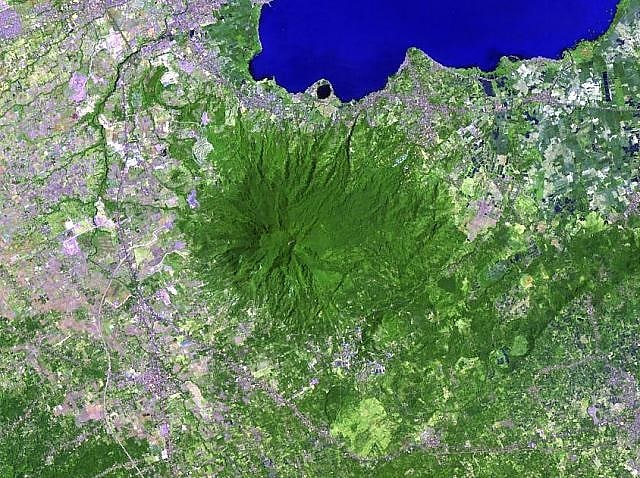
Mountain in the Philippines. Mount Makiling, or Mount Maquiling, is an inactive stratovolcano located in the provinces of Laguna and Batangas on the island of Luzon, Philippines. The mountain rises to an elevation of 1,090 m above mean sea level and is the highest feature of the Laguna Volcanic Field. The volcano has no recorded historic eruption but volcanism is still evident through geothermal features like mud spring and hot springs. South of the mountain is the Makiling-Banahaw Geothermal Plant. The Philippine Institute of Volcanology and Seismology classifies the volcano as "Inactive".
Mount Makiling is a state-owned forest reserve administered by the University of the Philippines Los Baños. Prior to its transfer to the university, the mountain was the first national park of the Philippines. Mount Makiling National Park was established on February 23, 1933 by Proclamation No. 552. However, it was decommissioned as a national park on June 20, 1963 by Republic Act no. 3523 when it was transferred to the University for use in forestry education and information.
The mountain is sacred to many pilgrims and is widely believed to be the home of an anita named Maria Makiling. It is one of the most known bundok dambanas in Calabarzon. It was declared as an ASEAN Heritage Park in 2013, with the title of "Mount Makiling Forest Reserve".[6]
Immaculate Conception Parish Church
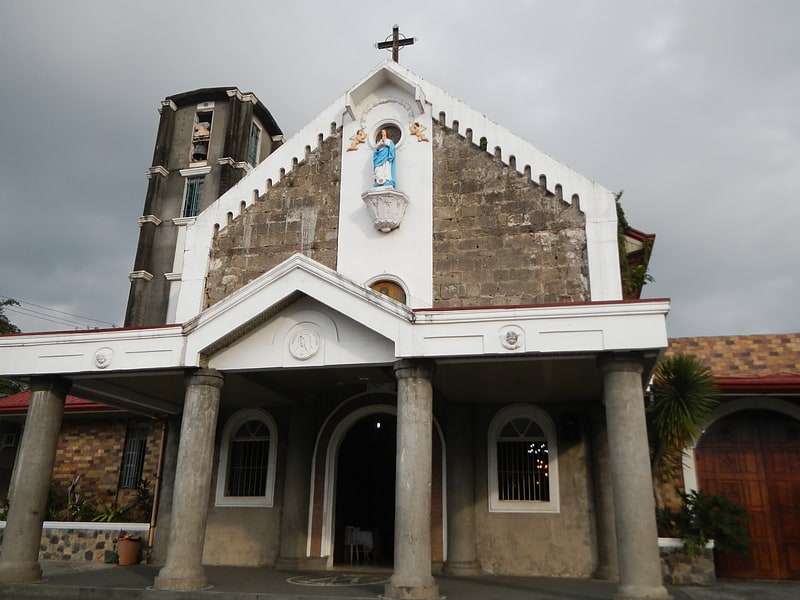
Catholic church in Los Baños, Philippines. The Immaculate Conception Parish Church is the oldest Roman Catholic church in the municipality of Los Baños, Laguna, Philippines. Its titular is the Nuestra Señora del Aguas Santas and its feast is celebrated every December 8.[7]
Los Baños

Los Baños, officially the Municipality of Los Baños, is a 1st class municipality in the province of Laguna, Philippines. According to the 2020 census, it has a population of 115,353 people.
It has a total land area of 56.5 square kilometers and is bordered on the south and south-west by Mount Makiling, on the north by Laguna de Bay. on the north-west by Calamba and on the east by the town of Bay. The town is located 63 kilometres (39 mi) southeast of Manila and is accessible via the South Luzon Expressway.
The municipality lies on the northern slopes of the long dormant volcano Mount Makiling and is known among tourists for its hot spring resorts. Los Baños also hosts two constituent universities of the University of the Philippines System: the University of the Philippines Los Baños and University of the Philippines Open University, along with other foreign and local and international research centers, such as the International Rice Research Institute, the ASEAN Center for Biodiversity, the Philippine Rice Research Institute, Philippine Carabao Center at UPLB, and SEAMEO-SEARCA, making the town a temporary home for tens of thousands of both local and foreign undergraduate and graduate students, researchers and support staff.
Los Baños was declared as the Special Science and Nature City of the Philippines through Presidential Proclamation No. 349. The proclamation, however, does not convert the municipality to a city or give it corporate powers that are accorded to other cities.
Aside from its importance in academics, science and research, Los Baños is a well-known tourist destination. Because of the town's proximity to Metro Manila, Los Baños' hot spring resorts are frequent weekend or summer getaways for residents of the vast metropolis and tourists from other places in the Philippines and abroad. Tourists who visit Los Baños also come to the several native delicacies stores in the town to buy the town's famous buko pie (coconut meat pie) as well as a home-grown brand of chocolate cake. Currently, it is Laguna's richest municipality in terms of assets amounting to Php 652.95 M.[8]
Saint Therese of the Child Jesus Parish Church
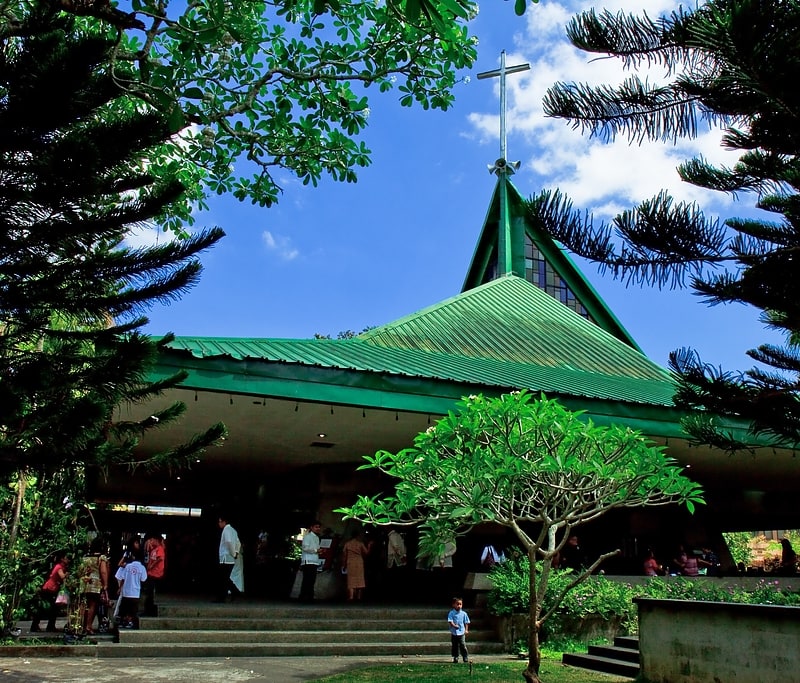
The Saint Thérèse of the Child Jesus Parish, is located along Silangan Road inside the University of the Philippines Los Baños campus and is often referred to as the unofficial UPLB Chapel. It is one of the three Roman catholic churches in the municipality of Los Baños, Laguna, Philippines. The church is designated as the Diocesan Shrine of Saint Thérèse of the Child Jesus of the Roman Catholic Diocese of San Pablo on October 1, 2016.[9]
Address: University of the Philippines Los Baños, 4031 Los Baños
Baker Memorial Hall

Building in Los Baños, Philippines. The Charles Fuller Baker Memorial Hall, also known as Baker Memorial Hall or simply Baker Hall, is one of the oldest buildings on the campus of University of the Philippines Los Baños and the oldest building of the College of Arts and Sciences. Built from 1927 to 1938, it is named after Charles Fuller Baker, the second and longest-serving dean, University of the Philippines Los Baños College of Agriculture.
It was part of the Los Baños Internment Camp for American and allied POWs and civilians during the Japanese Occupation of the Philippines during World War II.
It formerly served as the university gymnasium and home of the Department of Human Kinetics before the department was transferred to the Edwin Bingham Copeland Gymnasium.[10]
Address: Calamba, Mangga cor. Chico Road, UPLB Campus
Calamba Claypot
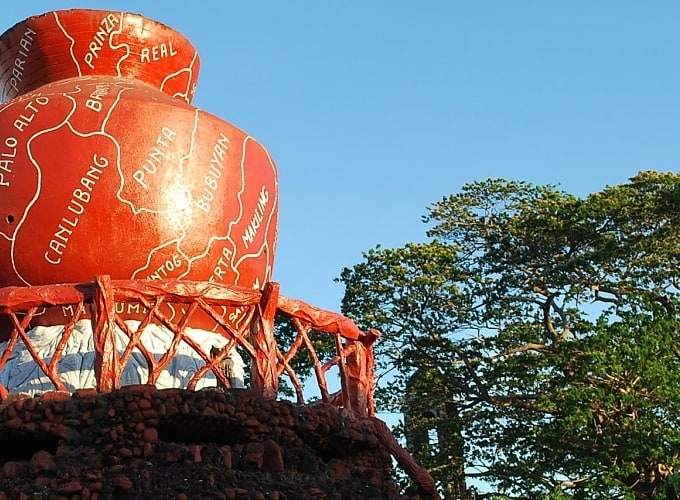
Calamba Claypot, also known as the Calamba Jar and The Banga, is a landmark in Calamba, Laguna, Philippines believed to be the largest claypot in the world. It is located at the City Plaza near Calamba Church and Rizal Shrine. Built in 1937, it was constructed as a reference to the origin of the town's name from kalamba, meaning "water jar", with names of the cities and villages inscribed on its exterior. The giant claypot can also be found in the city's official seal.
The plaza was proposed by the then town councilor Dr. Agapito Alzona, to utilize the area where the old town market once stood. The resolution was approved by the then town mayor Roman Lazaro. The giant claypot was designed and created by the sculptor Felipe Samaniego, a University of Philippines graduate who was trained under the famed National Artist for Visual Arts, Guillermo Tolentino. Construction of the monument began in 1937 and completed in 1939.[11]
Batino
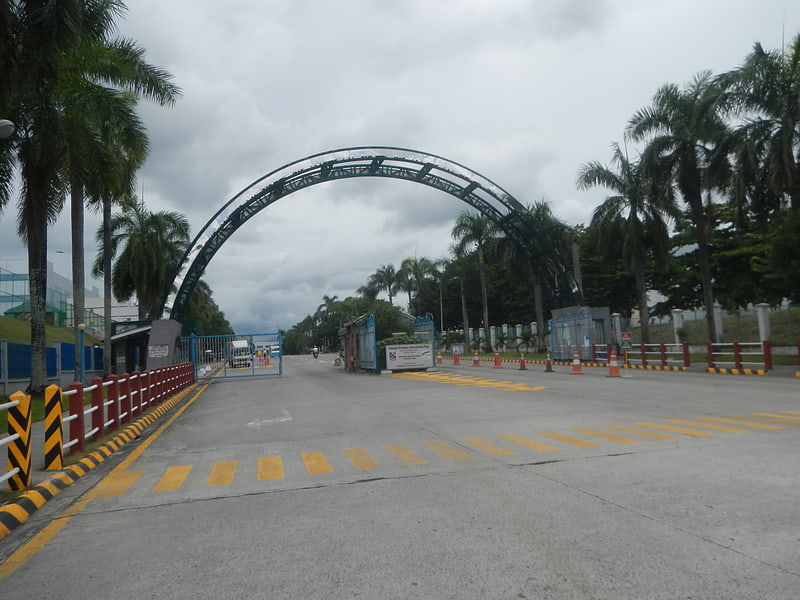
Batino is a rural industrial barangay located at Calamba City. Batino is located to the east of Barandal, south of Mayapa, north of Prinza and west of Paciano Rizal. Most of the establishments, if not all of it, are located on the west side of SLEX, leaving the east side of the barangay less developed than the west side of it, partly because the only access points are the SLEX and the Batino-Mayapa Road.[12]
Turbina
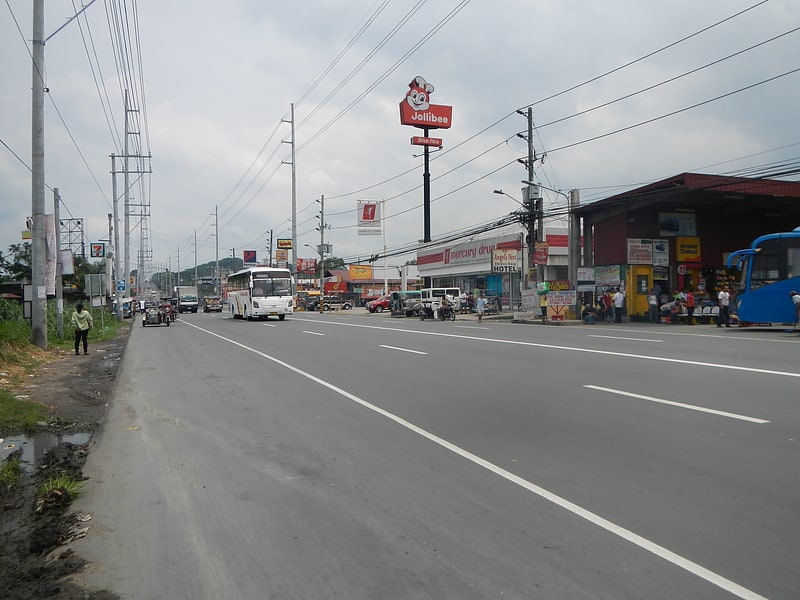
Turbina is an urban barangay, of Calamba City in Laguna. It is geographically situated in the south of the city. Turbina is known for the barangay terminal station of Calamba, located at the Maharlika Highway, and known for the South Luzon Expressway Calamba exit.[13]
Canlubang
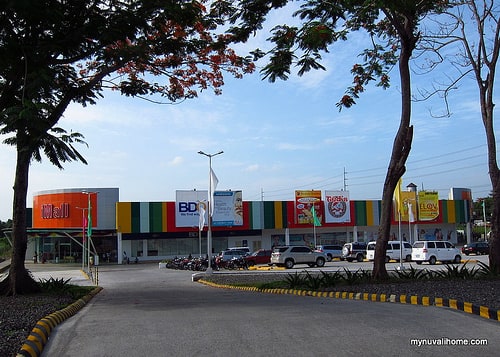
Canlubang is a major industrial zone located in the province of Laguna, southwest of Metro Manila in the Philippines. It was once a hacienda during the Spanish colonial period. Canlubang straddles two component cities of Laguna: Cabuyao, Calamba and the municipality of Silang in Cavite.
The official political unit with the name Canlubang is a barangay in Calamba City, Laguna. It is the largest and most populated barangay in Calamba.
Canlubang covers major industrial zones. The Nuvali development of Ayala Land could be found in the barangay and extends to as far as Cabuyao and Santa Rosa, Laguna.[14]